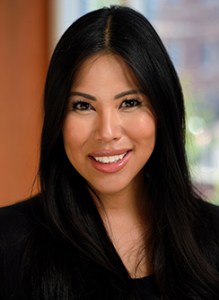
Title: Public Health Training Certificate in American Indian Health
Location: Navajo
Education
Pursuing Executive Doctorate of Nursing Practice, Johns Hopkins School of Nursing
Biography
Timian M. Godfrey redefines busy on a daily basis. As an advanced practice registered nurse, she alternates between hospital emergency departments on tribal lands of the Pine Ridge and Rosebud in South Dakota, Winnebago in Nebraska, and San Carlos Apache in Arizona, working about one week at a time.
Last year, she enrolled in the Executive Doctorate of Nursing Practice program at the Johns Hopkins School of Nursing. As a full-time advanced practice nurse and mother to two children, she has also consistently been a Deans List student (her advisor says, unsurprisingly, she is a quick study).
To add to this impressive lineup, Ms. Godfrey is also now pursuing her Public Health Training Certificate in American Indian Health. After participating in her first Center for American Indian Health Institute this past January, she will be traveling to Baltimore in July to take two additional courses: Introduction to Data Management Using American Indian Health Data and Introduction to Quantitative and Qualitative Research Methods, as part of the Johns Hopkins Center for American Indian Health 2018 Summer Institute. We caught up with her several weeks before Institute to see how she does it.
What are the challenges you see treating patients in Native communities?
I consistently see poor access to health services. This means evidence-based care is only provided on a partial basis. Health disparities are often solely addressed pharmacologically instead of holistically.
Providing holistic care promotes self-reliance and helps patients keep up positive health behaviors. Unfortunately, Ive found that closing the gap between evidence-based care and clinical feasibility on reservations is quite a challenge.
How do you use your training from the Bloomberg School?
Over the past decade and a half, Ive seen the importance of multidisciplinary care, working in the capacities ofcertified nursing assistant, emergency medical technician, registered nurse, and now advanced practiceregistered nurse.
This past Januarys Winter Institute enabled me to add an interdisciplinary and indigenous lens. This was invaluable with several projects Im working on. For example, I am implementing a pilot hospital-based diabetes education program on the San Carlos reservation.
How do you stay motivated?
Having the occasional expression of gratitude from my patients goes a long way.
Being of Navajo descent, there seems to be an intrinsic motivation to help native people. I am the salt clan born for the red bottom clan.
Studying at Institutes organized by the Center for American Indian Health really helps, as well. Being surrounding by fellow natives in a highly-esteemed academic setting was truly inspiring! It was as if we all had the same mindset, the same goal: to learn as much as we could to go back and help the people we serve. Continuing to grow academically while helping my people gives me great pleasure and happiness.